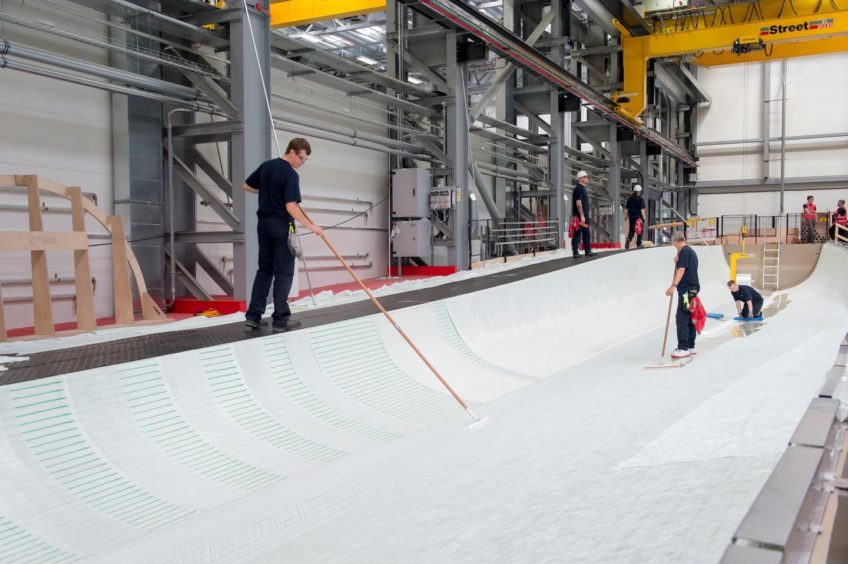
A report from Robert Gordon University has won enthusiastic headlines. By 2030 it foresaw that “the offshore energy workforce mix is expected to change with over 65% of the workforce projected to support low carbon energy activities”.
These are headlines which currently appeal to politicians. The underlying message is that oil and gas, which have gone from the status of economic saviours to political pariahs in a remarkably short space of time, are on the way out while green technologies are thrusting to take their place, jobs intact.
Proceed with caution, however, for RGU’s Offshore Energy Transferability Review contains heroic assumptions while the caveats have been under-reported. The hard fact is that most of these 200,000 jobs which “are likely to be required in 2030” are dependent on political actions and investment decisions that have not been taken.
According to RGU, the magic 200,000 jobs figure will break down into 90,000 supporting offshore wind, 70,000 in oil and gas with a further 40,000 in “other offshore related energy projects and clusters”. What could be simpler?
Given the failure so far, particularly in Scotland, to turn wind power into investment or jobs, the assumptions contained in these figures are startling. Ninety thousand jobs in offshore wind? By 2030? I think someone had better get a move on.
The report quotes an estimate of £170 billion to be invested on capital and operating activities in the UK offshore energy sector between 2021 and 2030 “including on oil and gas, offshore wind, CCUS and hydrogen”. This will create “many opportunities for the energy supply chain. It will also protect and create new, highly skilled jobs in these sectors”.
Well true enough. It would be difficult to spend £170bn without creating a lot of jobs. The inclusion of oil and gas within that mix gives some reassurance that at least a substantial proportion of that global number will continue to create employment, particularly in north-east Scotland – unless, of course, the Scottish Greens get their way and manage to kill the whole thing off.
However, the rest is rather less certain. Investment in offshore wind between 2021-2030, says the RGU report, “is estimated to be over £70bn, which is projected to create over 60,000 new jobs across the UK”. The words “across the UK” are important and should be noted with particular interest in the north-east. RGU’s predicted change in the “offshore energy workforce mix” will be geographic as well as sectoral.
To be brutal, the share of the £70bn that stays in the UK will depend on the UK getting its act together and the share which flows through Scotland will, similarly, depend on Scotland getting its act together, in both public and private sectors. No number of reports or projections will be substitutes for action that is still in short supply.
Massive investment in ports and infrastructure will be needed to meet the challenges ahead. Has anyone quantified the scale of what is required or how it is to be achieved? Has anyone run comparators with the countries which Scotland and the rest of the UK will be competing against for hardware that will end up in our own waters?
What are our ambitions? What, realistically, can we do here and therefore twist the arms of developers by every fiscal means at our disposal to ensure that it happens? These are the questions that were never asked or answered before the onshore wind market ran away from us and it would be reassuring to know they are being asked now.
Of course, some good things are happening. The announcement by Forth Ports that they plan to “create Scotland’s largest renewable energy hub on a 175 acre site in Leith” is welcome.
This £40m investment, they say, “will see the creation of a bespoke, riverside marine berth capable of accommodating the world’s largest offshore wind installation vessels”. That’s the kind of thing we need – and should have happened a decade ago.
Then take a look at what is happening in Hull which, make no mistake, will be a competitor for offshore work. While Scotland slept or issued press releases about the Saudi Arabia of Renewables, Hull was turning itself more modestly into the Aberdeen of Renewables.
“Green Port Hull has put the region on the world stage for green energy innovation and offshore wind growth,” they proclaim. “The city’s £3bn of public and private sector investment includes the £310 million Siemens Gamesa world-class wind turbine blade manufacturing facility, which contributes £73m GVA to the local economy, creating more than a thousand jobs.
“Hull has also seen supply chain investment from 3Sun Group, TRG Wind, GEV Offshore, Eltronic Wind Solutions, Scanel International, ALE and A2Sea. Renewables firm Orsted is investing £6bn in offshore wind operations on the east coast, with contracts awarded to Siemens Gamesa for the supply of turbines for two huge offshore wind farms”.
Big numbers and heady stuff which have taken years to develop. The Siemens plant – which in times past when we were serious about chasing inward investment might well have come to Scotland – is due reward for that sustained commitment.
Scotland does not need more press releases but we do need a plan. As the RGU review stresses, there needs to be close co-operation with the UK Government. We need to define ambitions, where they should be concentrated and the scale of investment required to turn headlines into reality.
In the meantime, oil and gas remain the birds in the hand. Only fools and pious, counter-productive Greens would throw them away lightly.
Brian Wilson is a former UK energy minister
Recommended for you
